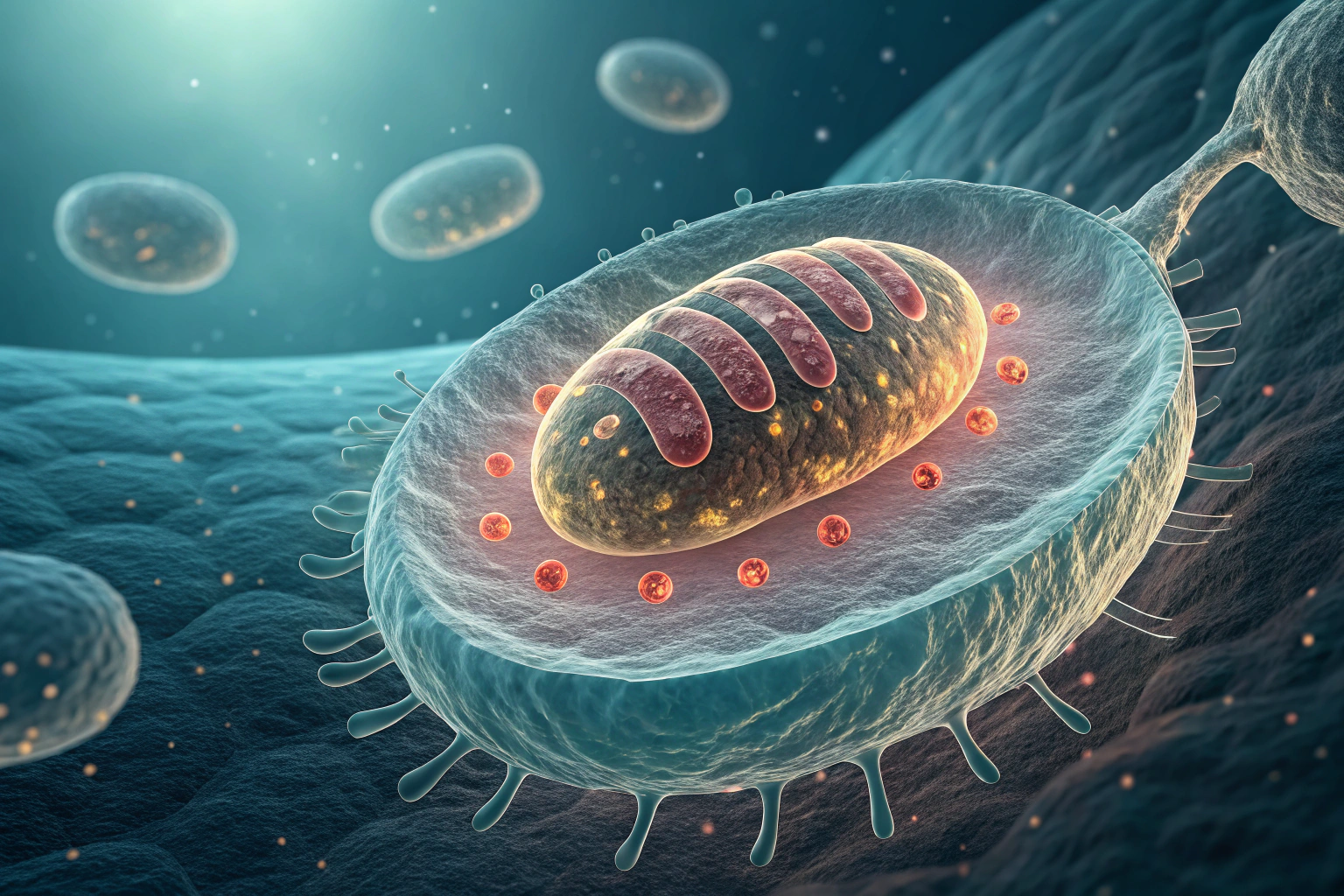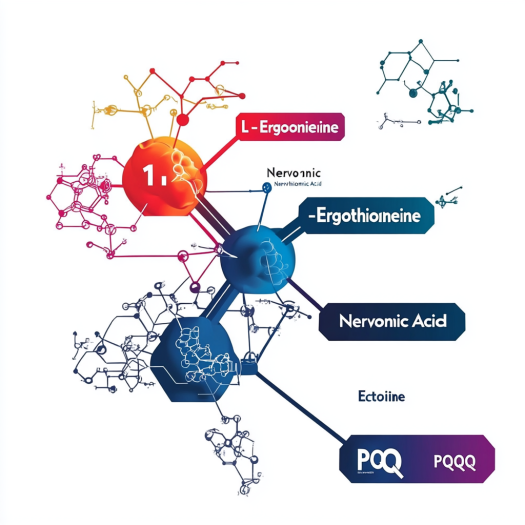
My nephew once asked why his “brain food” soup smelled like forests—I smiled, thinking of the ergothioneine hidden in those chewy mushrooms.
Ergothioneine is a natural amino-acid antioxidant found in mushrooms and fermented grains. Early studies suggest it shields cells from stress, supports healthy growth, and is generally well-tolerated, yet formal pediatric safety limits are still emerging, so careful dosing and medical guidance remain essential.
I want to share what I’ve learned—straight talk, parent to parent—about giving kids and teens this trending nutrient.
What Does Ergothioneine Actually Do in a Growing Body?
Tiny humans grow fast, and their cells churn out energy like mini power stations.
Ergothioneine slips into those busy cells through its private OCTN1 doorway, mops up excess free radicals, and helps mitochondria stay calm—offering a “safety helmet” during intense growth spurts when oxidative stress spikes.

Our bodies cannot make ergothioneine, so we rely on diet—think shiitake, king oyster, or black beans. In lab dishes, the molecule parks itself in bone, brain, and immune cells, places kids need most.
Researchers have seen it:
- Reduce DNA damage after UV exposure.
- Stabilize mitochondrial membranes under metabolic strain.
- Quiet over-excited immune cells, lowering unnecessary inflammation.
How a Child’s Cell Handles Stress
| Cell Type | Common Stressor | Ergothioneine Role |
|---|---|---|
| Neuron | Intense study, gaming marathons | Scavenges ROS, keeps signaling sharp |
| Muscle Fiber | Sports practice, growth spurts | Protects mitochondria, reduces soreness |
| Skin Cell | Sunlight, pollution | Limits UV-induced oxidative damage |
Parents often ask me, “Is it like vitamin C?” I say vitamin C is a fire extinguisher; ergothioneine is more like flame-retardant paint—quiet protection every second.
Has Ergothioneine Been Studied in Children Yet?
I combed through journals on quiet Sunday mornings, coffee in hand, searching for kid-specific data.
So far, direct pediatric trials are scarce, but cross-sectional surveys reveal higher natural ergothioneine intake aligns with lower inflammation markers in teen blood panels, and no toxicity has been reported in incidental case reviews.
Most published work still focuses on adults or animal models. Yet several clues boost confidence:
- Placental transport: Scientists have spotted OCTN1 proteins in human placentas, hinting prenatal exposure is natural.
- Breast-milk presence: Trace amounts show up in breast milk, suggesting evolutionary familiarity.
- GRAS status: The U.S. FDA classifies ergothioneine as “Generally Recognized As Safe” up to 30 mg/day for adults, providing a regulatory cushion.
Personal story: My sister’s pediatrician okayed a mushroom-based broth during her son’s chemo recovery, praising its gentle antioxidant profile compared to megadose vitamins.
Still, absence of harm is not proof of universal safety. Kids differ in metabolism, so we lean on cautious, food-first intake until pediatric trials expand.
How Much Ergothioneine Is Safe for Kids and Teens?
This question fills my inbox weekly.
A practical rule is 1 mg per 10 kg body weight from whole foods, capping supplements for teens at 5–10 mg/day, mirroring “two servings of mushrooms,” while younger children should stick to diet unless a doctor advises otherwise.
Quick Reference Table
| Age Group | Body Weight (kg) | Food-Only Target | Supplement Cap | Notes |
|---|---|---|---|---|
| 3–6 yrs | 15–25 | 1–2 mg | Avoid | Use soups and bean pastes |
| 7–12 yrs | 26–40 | 2–4 mg | ≤5 mg | Split AM/PM if used |
| 13–18 yrs | 41–70 | 3–6 mg | ≤10 mg | Pair with zinc-rich foods |
The numbers above come from adult UL scaling and mushroom assays showing ~3 mg ergothioneine per 100 g cooked oyster mushrooms. Always cross-check your product’s COA.
Why keep doses modest? Children have smaller livers, and antioxidant balance1 can flip if we flood systems. Think “seatbelt,” not “bubble wrap.”
Can Ergothioneine Clash With Other Nutrients or Medications?
Parents juggling multivitamins, ADHD meds, and sports drinks worry about mix-and-match chaos.
Current data show no direct drug–ergothioneine conflicts, but high doses may mask oxidative signals needed for vaccine response, and combining with iron supplements on an empty stomach could slow iron uptake.
One overlooked angle is synergy with mitochondrial cofactors such as PQQ—I often guide formulators to our clean PQQ line for teen athletes needing extra energy without caffeine. The combo works because ergothioneine shields, while PQQ builds new mitochondria—a tag-team effect.
Key watch-outs:
- Iron: Give iron 2 hours apart from mushroom capsules to avoid chelation.
- Chemotherapy: Some oncologists prefer no antioxidants during active treatment; always align with specialists.
- Autoimmune meds: Antioxidants can theoretically blunt ROS-based drug mechanisms—monitor inflammatory markers.
Anecdote: One soccer mom swapped her son’s sugary “pre-workout” for an ergothioneine + PQQ gummy; the coach noticed better stamina, and the pharmacy bill stayed the same.
Should Parents Rely on Food or Supplements First?
I’m a supplement manufacturer, yet my default advice remains: start in the kitchen.
Whole foods deliver a symphony of nutrients—beta-glucans, fiber, B-vitamins—that dance with ergothioneine, while isolated capsules act like soloists, useful but best introduced after diet gaps are measured.
Practical tips:
- Add finely diced shiitake to meatballs—kids rarely notice.
- Blend black-bean spread into quesadillas for a “chocolatey” twist.
- Ferment soybeans (natto) for adventurous teens; the slip is worth the antioxidant punch.
When supplements make sense:
- Food allergies: If mushrooms trigger reactions, controlled capsules bypass chitin proteins.
- Special diets: Vegan athletes may need predictable dosing during tournaments.
- Clinical needs: Pediatric neurologists sometimes explore antioxidants in seizure management research.
Remember, supplements should carry third-party testing seals and child-proof lids.
What Should I Ask My Pediatrician Before Starting Ergothioneine?
A quick doctor chat beats late-night Googling.
Prepare dosage goals, current meds, and a recent blood panel; ask about antioxidant interactions, monitoring plans, and signs to watch—clear communication keeps kids safe and takes guesswork off parents’ shoulders.
Suggested question list:
- Does my child’s growth chart or health history raise red flags for antioxidants?
- What dose and form align with their diet?
- Should we run baseline oxidative stress or liver enzyme tests first?
- How often should we review progress?
Vulnerable moment: I once pushed a trendy supplement on my teenage cousin without consulting his endocrinologist—he later developed mild tummy cramps. Lesson learned: professional guidance saves awkward family dinners.
Pediatric Check-In Checklist
| Task | Why It Matters |
|---|---|
| Bring supplement label | Confirms purity claims |
| Share full med list | Prevents silent clashes |
| Note diet diaries | Spots natural overlaps |
| Schedule follow-up | Tracks real outcomes |

Conclusion
Food first, low dose, doctor-guided—ergothioneine can be a gentle ally for young cells.
-
Understanding antioxidant balance is crucial for health; this resource will explain its importance and how to maintain it. ↩

